Tints of Nature Hair Color Review
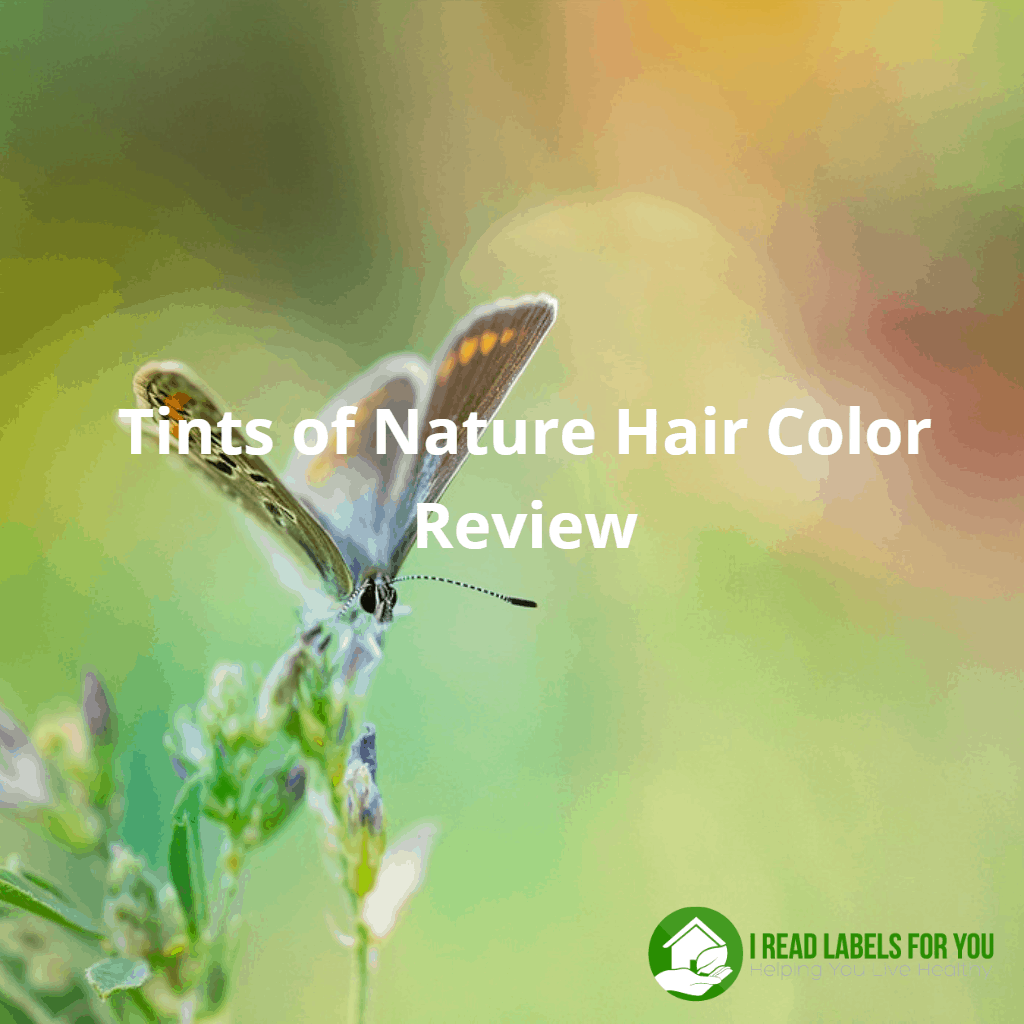
During my college years, dying hair was quite popular with girls. Even though none of us needed it at that time, we did it just for the sake of color. Now, 25 years later, I try to put off dying my hair for as long as possible even though now I do need it. The reason I am cautious about coloring my hair is that I know what hair dyes are made of and simply don’t want to risk my health. However, there are safe solutions. Stay with me to find out if Tints of Nature hair color is one of them. We will look not only into Tints of Nature hair dye but also into Tints of Nature henna cream.
The Tints of Nature website markets its permanent hair color as “containing 95% naturally derived ingredients,” and as being “free from ammonia, parabens, resorcinol, cocamide DEA and propylene glycol.” Does that mean that it is safe or at least safer than other permanent hair colors? The key to gauging the safety of a hair color, or any beauty or personal care product, is to look at the ingredients. After doing this for years, I encourage you to ignore marketing claims and advertisement and jump right to the list of ingredients.

Tints of Nature hair color ingredients
Let us look at Tints of Nature hair dye ingredients using those listed on the Tints of Nature website for 3N Natural Dark Brown Permanent Hair Dye, accessed on April 13, 2020.
PEG-2 Soyamine, Aqua,*Aloe Barbadensis Leaf Extract, **PEG-4 Rapeseedamide, **Propanediol, Oleic Acid, Ethanolamine, †Parfum **Hydrolyzed Wheat Protein, p-Phenylenediamine, 4-Chlororesorcinol, Sodium Sulfite, Ascorbic Acid, Sodium Hydrosulfite, Tetrasodium Glutamate Diacetate, PEG-7 Glyceryl Cocoate, *Symphytum Officinale (Comfrey) Leaf Extract, *Citrus Aurantium Dulcis (Orange) Peel Extract, *Citrus Grandis (Grapefruit) Fruit Extract, 2-Amino-4-Hydroxyethylaminoanisole Sulfate, N- Phenyl-p-Phenylenediamine Sulfate, m-Aminophenol, 4- Amino-hydroxytoluene, Tocopherol (source).
What do you think about the ingredients? Have you had a chance to look at the ingredients of a permanent hair color before?
The long chemical words are hair dyes. In other words, they are color additives that do the job of coloring. Therefore, every permanent hair color must contain them. Otherwise, it will not be able to cover gray hair or dramatically change your natural hair color.
Tints of Nature hair color dyeing agents
To begin, there are six hair dyes in the Tints of Nature hair dye formulation:
p-Phenylenediamine
4-Chlororesorcinol
2-Amino-4-Hydroxyethylaminoanisole Sulfate
N- Phenyl-p-Phenylenediamine Sulfate
m-Aminophenol
4- Amino-hydroxytoluene
Further, these dyes do not come from plants or minerals. According to the FDA, they are called “coal-tar dyes,” because originally coloring materials were by-products of the coal industry. Now, as the FDA states, they come from petroleum.
Hence, we cannot consider the Tints of Nature permanent hair color dyeing ingredients naturally derived – unless we count petroleum as natural, of course. As a matter of fact, there is no legal definition of the phrase “naturally derived.” Thus, it is simply a marketing term.
Hair dyes and allergic reactions
To continue, the FDA warns consumers that “some coal-tar hair dyes can cause allergic reactions or sensitization that may result in skin irritation and hair loss. People can develop sensitivities with repeated exposure.” (source)
To clarify, sensitization means developing an allergic reaction to a product over time and with repeated use. For example, if you are fine after using a Tints of Nature hair color today, this does not mean you will never have an allergic reaction to it. In fact, if you use a sensitizer, you are more likely to have an allergic reaction each time you use the product. That’s why the FDA advises that people who dye their hair perform a patch test before every application.
A patch test is when you test a small patch of hair to see if there are any adverse reactions. It’s important to do this each time you use a hair dye, even if you have used the hair dye before. Be sure to do so, just in case you have become sensitized through the prior applications.
Sensitizers in the Tints of Nature hair dye
Do any of the six hair dyes in the Tints of Nature hair color cause sensitization?
For starters, the European Scientific Committee on Consumer Safety (SCCS) has tested and classified 110 hair dyes into extreme, strong, and moderate sensitizers.
This is how the SCCS has classified the six hair coloring chemicals in the Tints of Nature permanent hair color.
|
p-Phenylenediamine |
extreme sensitizer |
|
4-Chlororesorcinol |
moderate sensitizer |
|
2-Amino-4-Hydroxyethylaminoanisole Sulfate |
insufficient testing |
|
N-Phenyl-p-Phenylenediamine Sulfate |
extreme sensitizer |
|
m-Aminophenol |
strong sensitizer |
|
4- Amino-hydroxytoluene |
strong sensitizer |
How does this make you feel? Are the Tints of Nature’s claims about “95% naturally derived ingredients” and being “free from ammonia, parabens, resorcinol, cocamide DEA and propylene glycol” as equally appealing to you?
Small amounts of hair dyes matter
You may think that Tints of Nature used hair coloring chemicals in tiny amounts, and so they are nothing to worry about.
However, the amount of dye used in the SCCS patch tests was very small, too. For example, p-Phenylenediamine (PPD) was tested at 0.06%. Another extreme sensitizer in the Tints of Nature hair color, N-Phenyl-p-Phenylenediamine Sulfate, was tested at 0.02%.
Consequently, small amounts do matter. Even if all the hair dyes that the product contains amounted to less than 1%, there would still be a risk of sensitization, allergic reaction, and hair loss.
Hence, in my Permanent Hair Color Rating List e-book, I rate hair color brands based on the risk of sensitization and other health risks. So, if you want to know my opinions as to how Tints of Nature hair dye compares to other permanent hair colors, check it out.
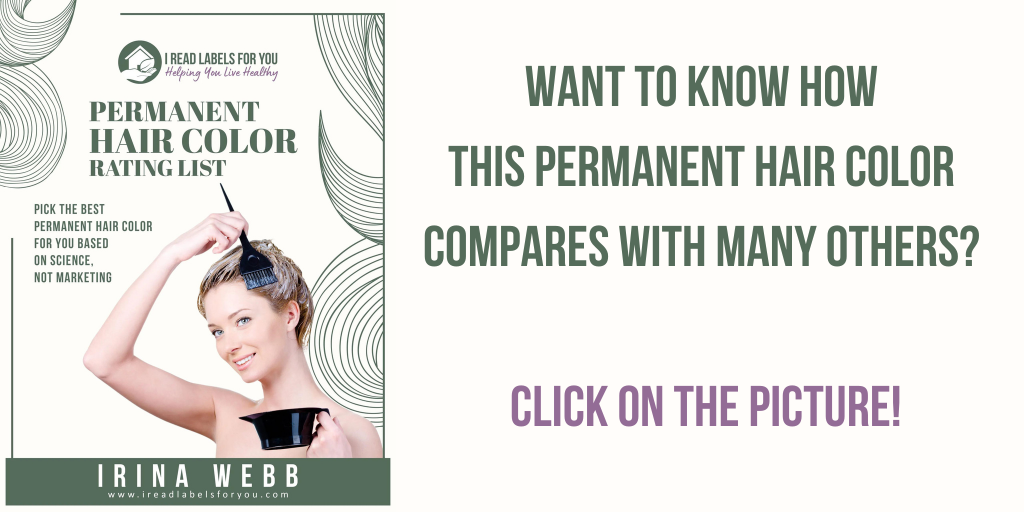
What “ammonia free” really means
Is the fact that Tints of Nature hair color is free of ammonia a great thing?
Naturally, you have noticed many hair color companies boast that their hair colors are free of ammonia. Because ammonia has a strong odor, we tend to think that a hair color without the odor is good for us, or at least better than the one with ammonia. However, it is not that simple.
Substitute for ammonia in the Tints of Nature hair dye
When a manufacturer claims that their product is “free” of something, I always encourage my blog readers and clients to investigate what they use instead.
In essence, all permanent hair colors work the same way. That is to say, they open the outer layer of the hair so that hair dyes can penetrate the hair. And the chemicals that do this job are ammonia or its substitute, ethanolamine.
So, if ammonia is not in the hair color list of ingredients, ethanolamine must be there instead. Unfortunately, ethanolamine is not any better. In fact, studies have shown that it is more harmful. You can learn about how it is more harmful in my ammonia-free hair color brands post.
Tints of Nature henna cream
Now that we have discussed the ingredients of the Tints of Nature hair color, let us look at the ingredients of its henna cream to see how similar they are to those of the Tints of Nature hair dye.
I accessed the ingredients on April 13, 2020.
Aqua,**Propanediol, **Cetyl Alcohol, **Stearyl Alcohol, PEG-100 Stearate, Phenoxyethanol, Oleth-10, Basic Brown 16, **Hydrolyzed Wheat Protein, Alcohol Denat., Stearalkonium Chloride, Triethanolamine, Cetrimonium Chloride, †Parfum, Polyquaternium-10, Basic Blue 99, Ethylhexylglycerin, Tocopherol, Limonene, Lawsonia Inermis (Henna) Leaf Extract, *Aloe Barbadensis Leaf Extract, *Anthemis Nobilis (Chamomile) Flower Extract, Tetrasodium Glutamate Diacetate, *Calendula Officinalis (Marigold) Flower Extract, *Helianthus Annuus (Sunflower) Seed Extract, *Camellia Sinensis (Green Tea) Leaf Extract, Benzyl Alcohol, *Citrus Aurantium Dulcis (Orange) Peel Extract, Sodium Benzoate, *Citrus Grandis (Grapefruit) Fruit Extract, Basic Red 76, Acid Violet 43, Basic Yellow 57, Basic Red 51, Potassium Sorbate, Citric Acid, Ascorbic Acid, Sorbic Acid (source).
As you can see, despite being called “henna cream,” it consists of more than just henna. It is not a simple henna/indigo/cassia powder that you mix with water. To clarify, I consider those powders truly natural hair color products and the safest option available to us.
Instead, Tints of Nature henna cream is a semi-permanent hair color that contains not only henna but also a lot of chemical ingredients. Just as the Tints of Nature permanent hair color, the Tints of Nature henna cream has chemical hair dyes.
Hair dyes in the henna cream
Like the Tints of Nature hair color, the henna cream has six hair dyeing agents as well: basic brown 16, basic blue 99, acid violet 43, basic red 76, basic yellow 57, and basic red 51.
The good news is that, unlike in the Tints of Nature hair dye, three of them are non-sensitizers: basic red 76, basic yellow 57, and basic red 51.
There is one moderate sensitizer, which is basic brown 16. And as for basic blue 99 and acid violet 43, they have not been classified by the SCCS. In the case of basic blue 99, the SCCS could not estimate its safety because manufacturers submitted highly variable batches.
You should also know about reports of positive allergic reaction to semi-permanent hair dyes. For example, the Contact Dermatitis medical journal reported the case of a 56-year old woman who developed generalized wheals, nausea, dyspnea, and impaired consciousness 10 min after she washed off a semi-permanent hair dye. Luckily, she knew to go to the ER immediately.1
Conclusion about Tints of Nature hair color and henna cream

To sum up, in this post you have learned about the importance of reading ingredients, not just marketing claims. You have also learned that despite appealing marketing claims, Tints of Nature hair dye is not safe, in my opinion. It can cause sensitization because it includes extreme, strong, and moderate sensitizers as defined by the European Union SCCS.
As for the Tints of Nature henna cream, it promises 80% coverage, which is not bad. If you are ok with it, go for it, as it is safer than a permanent hair color. It contains neither ammonia nor ethanolamine. Nor does it have extreme or strong sensitizers. However, remember that being a semi-permanent hair color, it can also cause an allergic reaction. In other words, it is not completely safe, but may serve as a transition step from a permanent hair color to a safer hair color.
In addition, the hair dyes in the Tints of Nature henna cream vary depending on the shade. If you are looking for a safer shade, I can assist you in finding the best. Book a consultation with me, and I will help you choose the safest shade out of the shades you show to me. You can also check out its Amazon reviews here.
You can also find natural hair color products and many other safe products in my shop.
References
1 Washio, K., Ijuin, K., Fukunaga, A., Nagai, H., & Nishigori, C. (2017). Contact anaphylaxis caused by Basic Blue 99 in hair dye. Contact Dermatitis, 77(2), 122-123.

Download The Free Guide!
5 Powerful Steps To A Non-Toxic Home
Join our informed consumer community and get our free guide the “5 Powerful Steps To A Non-Toxic Home”.

 Written by
Written by 
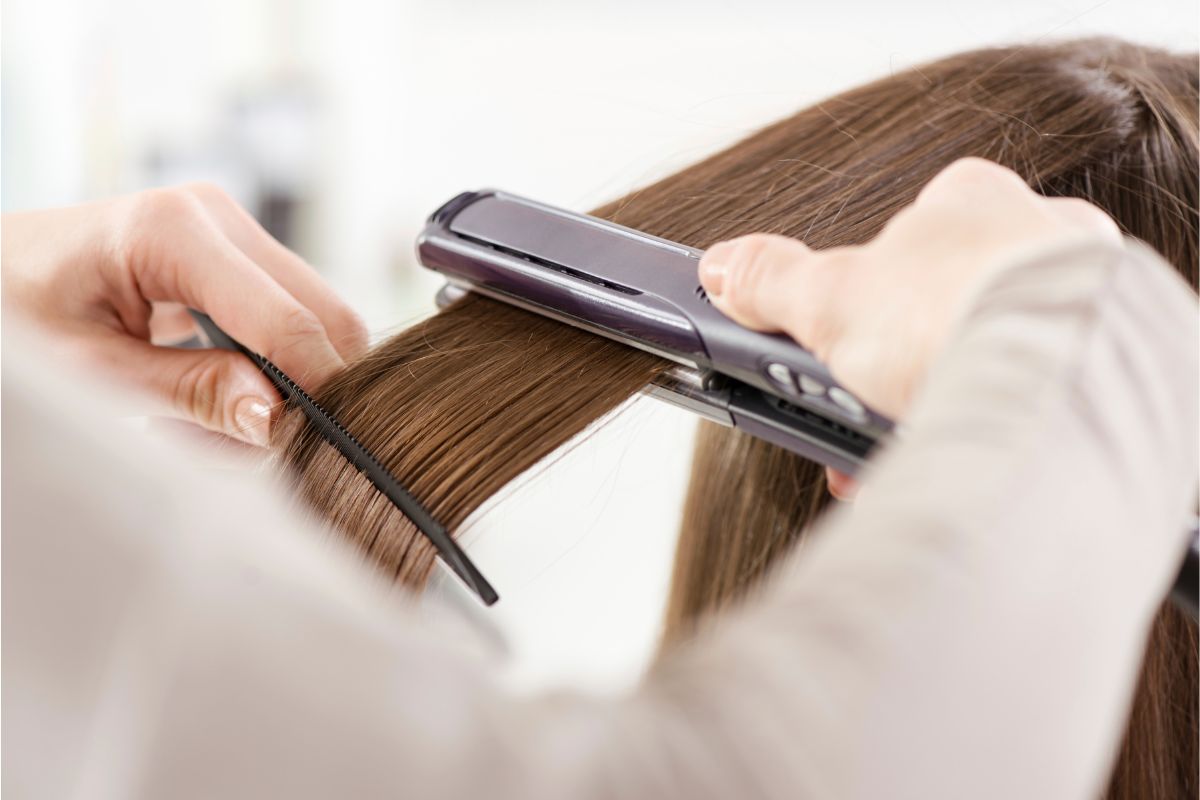


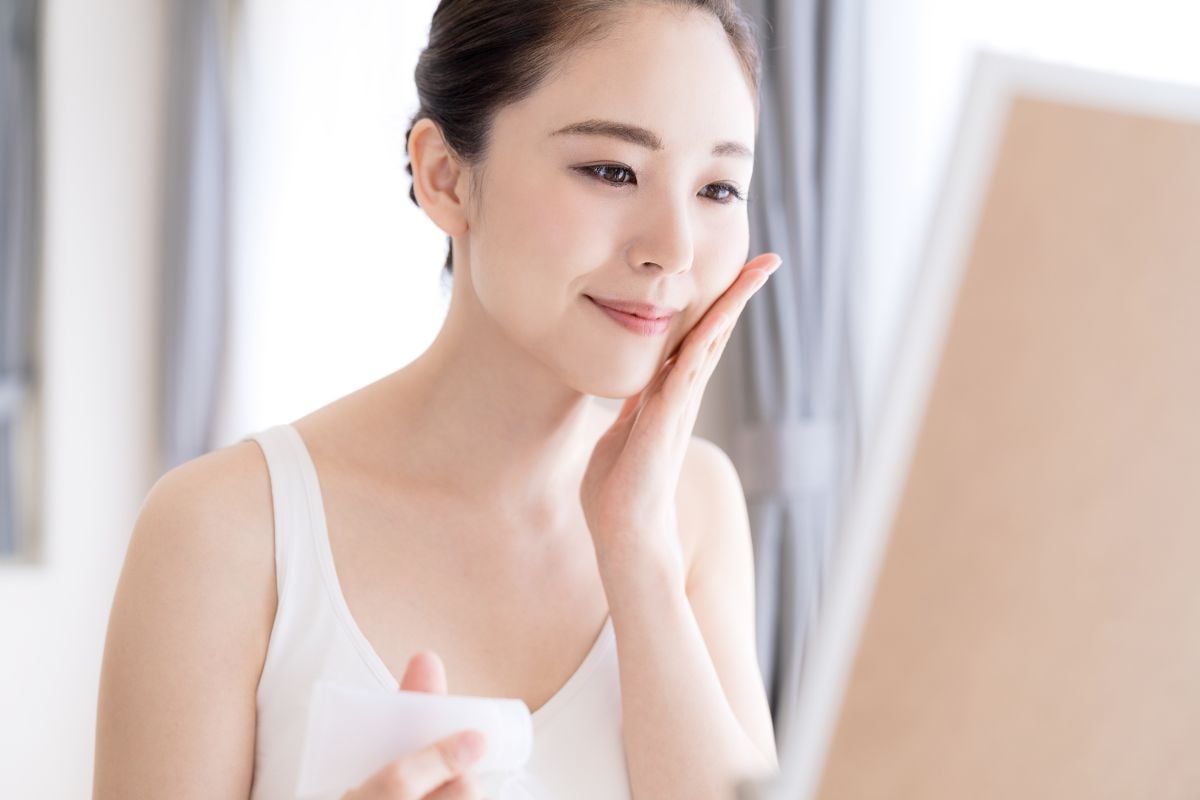
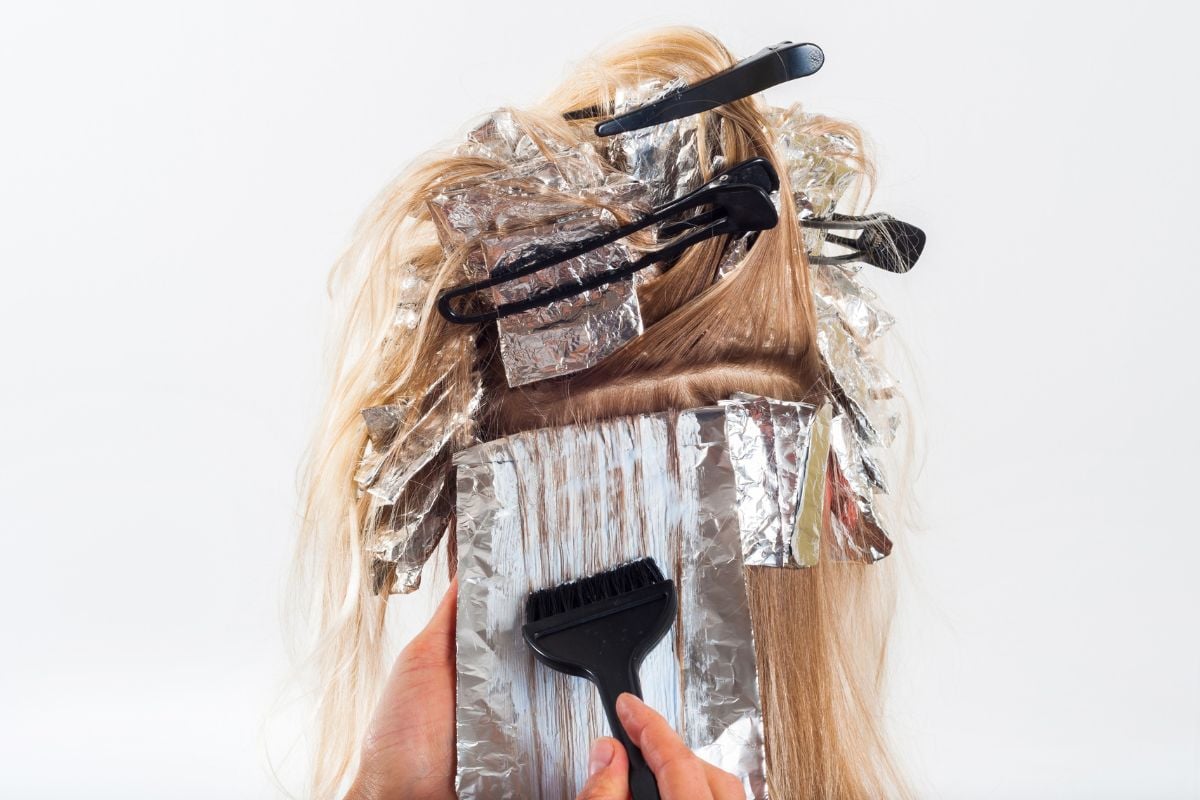
Hi,
Do you know anything about Herbatint or Naturtint hair dyes? Are they all Natural?
thanks
Paul
Hi Paul,
There is no such thing as a “natural” permanent hair color.
Both hair colors you mentioned are included in our Permanent Hair Color Rating List E-Book.
Wowwww just wowww…I am amazed by reading this article, how much informative it is. The article is really helpful!!! Thoroughly explained each area from basic ingredients used in henna to allergic reactions caused, info about henna cream. I’d say the writer perfectly knows what she is talking about, what needs to be said, and what not for the readers’ understanding; in short, perfectly summarize the topics. The best part of the article is where the writer fully explained what is actually meant by ammonia-free. This article will be beneficial for people who are interested in basic knowledge about henna.
Hi!
I would like to ask you if Tints of nature permanent hair color causes nerve damage. I have recently been feeling muscle twitching inside my mouth and am wondering if that is caused by hair dye from this brand
Hello,
I really appreciate your website and how helpful it is. But there is one thing that prevents me for staying on it (at least on my phone) and it’s the bar on the left hand side of the screen (the button bar for Facebook/whatsapp/email/etc)
It is frustrating because it is always on top of the text, it prevents viewers from reading the content.
Please look into fixing it. I find myself wanting to read the articles but give up because of that bar.
Thank you!
Thank you for pointing it out, Maria. Have you tried to move the text? The bar stays in one place but you can move the text to be above the bar… Let me know, please. I do want you to have a good experience but also want people to share my content. ~Irina
Irina, I noticed you stress a patch test every time you use this dye. My reaction to the PPD showed up weeks after use. I patch test would have not worked as I had no symptoms until 2 weeks after use. At that time, I became extremely ill with bronchitis, asthma, dizziness, fatigue and more. I developed a rash on the back of my neck. It was hard to diagnose because I used the dye weeks prior and the doctors thought I had broncitis and I was prescribed antibiotics. Three weeks after using Tints of Nature my head was on fire, my brain was zinging with lightning bolts and my hair came out in chucks. It continued to fall out over at least 6 months after use and I continued to be sick. Perhaps a patch test is a safety net for some but in my case that would not have saved my health, hair loss of horrific consequences to using this organic dye. I am really lucky I lived through it. The pretty packaging with all the herbs including statements of Organic, tested by dermatologist and natural was also a deterrent pin pointing my severe illness and reaction. It just wasn’t possible, it was Organic and purchased at a prominent Health Food Store! They also had a sign on the Tints of Nature display “GOOD4YOU”. I believed it! I was willing to pay twice as much for the Organic product once I read the box. I used this product twice and it was devastating to my mental, physical, financial and emotional well being over the past 2 years. Years off my life, extreme suffering. How embarrassing to get drastically ill and loose your hair! I thought I had a foreign disease! One visit into a health food store changed my life and the lives of my loved ones. Unfortunately, now my lungs are sensitized and I have developed an auto immune disorder. What a challenge to stay alive. It should be against the law to make false claims by advertising to everyday people just trying to do something healthier. Beware and Thank you for all your support. I pray other women do not suffer the same fate. Lori
So sorry about your experience with this product.
Thank you so much for sharing so you can help
other people avoid the same issues.
Dear Loriann,
I am so sorry to hear this! I have used Tints of N for a few yrs now but am looking for something much better now bc I cannot lose weight and my endocrine/ hormonal system is a mess. It sounds in my professional and personal opinion that the hair dye was the “straw that broke the camel’s back” for you so to speak. I, myself have suffered with autoimmune issues for years and they don’t just happen over night and really such severe symptoms either. The body has to already be in a state of imbalance and something sets it off. in my case, was a 14 hour labor where I couldn’t sit down for one minute due to sciatic nerve pain. This was my “straw” and then onslaught of thyroid and endocrine complications. I hope you are feeling better. I feel better when I take Zeolites to detox and nettles and dandelion and other herbs and flower remedies. A clean liver is key for people with sensitivity to chemicals.
Loriann I’m crying inside for you. I’m so so sorry you suffered this. I dyed my hair with this product a week ago and have been losing hair ever since, which is why I googled its association with hair loss. Just like you, I was at my natural grocery store and was totally duped by the marketing and now I’m mortified at what might happen next. This stuff should be illegal!!!!! I pray you’ve found healing from the situation and that your story can prevent others from this fate 🙁